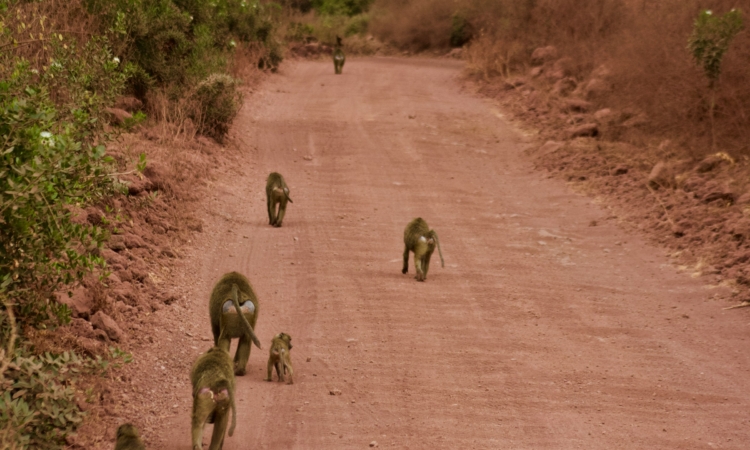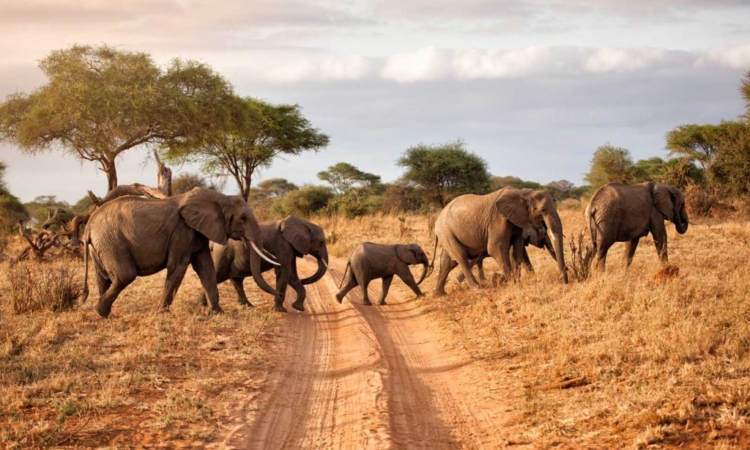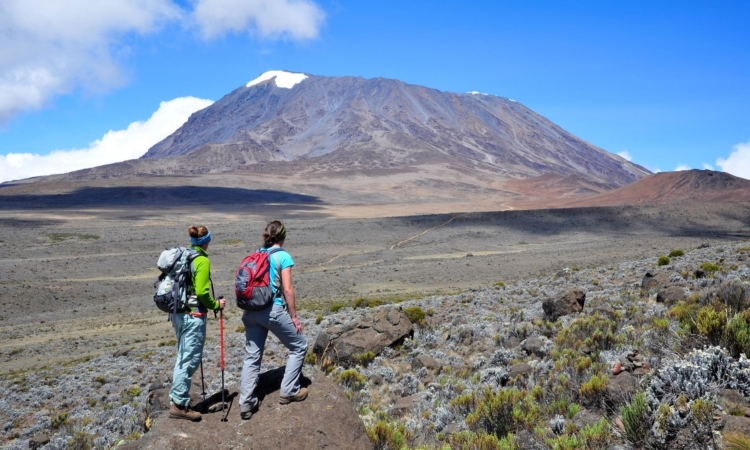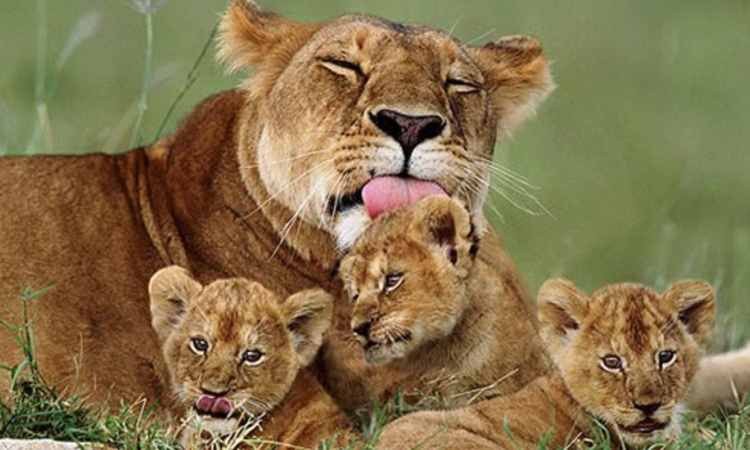This 10-day Best Of Tanzania Safari will see you visit 6 different tourist destinations in the Northern tourism circuit of…
Discover top Lake Manyara safari and tour packages for 2025/2026, offering unforgettable wildlife encounters, scenery viewing, and community tours.
 On Offer
On Offer
This 10-day Best Of Tanzania Safari will see you visit 6 different tourist destinations in the Northern tourism circuit of…
 On Offer
On Offer
The 5-day Wildlife Safari in Tanzania will see you visit the most popular national parks located in the Noth part…
 On Offer
On Offer
This 10-day Kilimanjaro climbing & wildlife Safari in Tanzania will see you summit the tallest mountain on the African continent,…
 On Offer
On Offer
A short but rewarding Tanzania wildlife Tour to Lake Manyara national park and Tarangire national park which are among the…
Lake Manyara National Park is best visited during the dry season (June to October) but remains open year-round. Entry fees vary for residents, citizens, and non-residents. The park's serene environment, rich wildlife, and engaging activities make it a peaceful and enriching destination for travelers.
Sprawled within the northern side of Tanzania, Lake Manyara National Park is a beautiful and biodiverse protected area extending over 330 square kilometers (33,000 hectares or 125 square miles). Of this area, more than 70% (230 square kilometers/23,000 hectares) consists of lake surface.
This magnificent park was established in 1960 and is currently managed by the Tanzania National Parks Authority. Lake Manyara is a shallow, saline lake situated at an altitude of 960 meters above sea level, formed in a depression within the Rift Valley system.
Lake Manyara National Park is located in the Manyara and Arusha regions, between the Great Rift Valley and Lake Manyara, approximately 126 kilometers west of Arusha Town. This national park includes only the northwestern quadrant of the lake, which covers about 200 square kilometers.
To the east of the park lies the Kwa Kuchinja Wildlife Migration Corridor, which protects migrating animals between Tarangire National Park to the southeast, the stunning Engaruka Basin to the north, and Lake Manyara to the west.
The park’s name originates from a plant species, Euphorbia tirucalli, locally referred to as “Emanyara” in the Masai dialect. These plants are used by the Masai people to create boundaries around homesteads as a way of protecting against predators, thieves, and poachers.
The area where Lake Manyara National Park is now located was a popular site for sports hunting since the 1920s. However, in 1957, it was gazetted as a game reserve, and three years later, it gained national park status. In 1974, more than 550 hectares were added to the southern part of the park.
In 1981, Lake Manyara became a UNESCO Biosphere Reserve as part of the organization’s Man and Biosphere Programme. The park is also part of the larger Lake Manyara Biosphere Reserve, which includes the lake itself, areas within and outside the park, and the Marang Forest Reserve in the adjoining uplands.
This Tanzanian national park has diverse habitats with over 670 species of flowering plants and ferns. These include lush groundwater forests dominated by Trichilia roka, woodlands dominated by acacia and Commiphora species, grasslands dominated by Cynodon dactylon in dry areas, and vast swamps on the banks of the Simba River and its tributaries.
Lake Manyara National Park is an exceptionally diverse protected area, especially known for its rare tree-climbing lions, which set it apart from other national parks in Tanzania. It also boasts the highest elephant population in the country and serves as a passage point for large migratory mammals such as zebras, wildebeests, Grant’s gazelles, and Thomson’s gazelles, among others.
Other species that call this park home include the klipspringer, Cape buffaloes, bushbucks, Defassa waterbucks, Kirk’s dik-dik, warthogs, giraffes, olive baboons, impalas, hippos, and many others.
If you’re hoping to spot large predators during your African safari, Lake Manyara National Park is the place to be. Here, you might encounter cheetahs, honey badgers, leopards, African golden cats, serval cats, genets, spotted hyenas, various mongoose species, black-backed jackals, African civets, African wild cats, and bat-eared foxes, among others.
Lake Manyara National Park is an important birding area, home to over 400 bird species, including birds of prey, waterbirds, migratory species, and woodland and forest birds. Notable species to look for include the extraordinary lesser and greater flamingos, red-fronted tinkerbird, grey-headed kingfisher, Von der Decken’s hornbill, yellow-billed stork, grey heron, egrets, silvery-cheeked hornbill, Baglafetche weaver, red-chested cuckoo, lilac-breasted roller, pink-backed pelican, marabou stork, little bee-eater, southern ground hornbill, blue-billed teal, great white pelican, black heron, Nubian woodpecker, and palm-nut vulture.
The lake is also home to the endangered Oreochromis amphimelas, a unique fish species endemic to Tanzania that thrives in the saline lakes with enclosed basins. For butterfly enthusiasts, Lake Manyara National Park offers the perfect opportunity to observe over 180 species of butterflies.
In addition to its wildlife and birdlife, Lake Manyara National Park offers a variety of other attractions, including vast marshlands that shelter numerous bird species, the rocky escarpment of the Rift Valley wall, hot springs located at the heart and southern border of the park, and the western shores of the lake known as “Maji Moto Hot Springs.” The saline flats, which expand when the lake shrinks during the dry season, and the lush mahogany and fig trees in the forest area are also worth exploring. The hippo pool, located on the northern shores of the lake, is another highlight for visitors.
The current entry fees (until June 30, 2021) for Lake Manyara National Park are $53.10 for adults and $17.70 for children. Effective July 1, 2021, adults will pay $59.00 during the high season and $53.10 during the low season, while children will continue to pay $17.70 year-round.
A comfortable place to rest after a long day of wildlife exploration is essential for any traveler, and there are numerous accommodation options in Lake Manyara National Park. Some of the top facilities include Losirwa Camp, Lake Manyara Kilimamoja Lodge, Eunoto Retreat Manyara, Oremiti Tented Lodge, Lake Manyara Serena Safari Lodge, Lemala Manyara Camp, Twiga Camp, Manyara Ranch Conservancy, the Escarpment Luxury Lodge Manyara, Lake Manyara Plantation Lodge, Isoitok Camp Manyara, Burudika Manyara Lodge, Kirurumu Tented Lodge, Migunga Tented Camp, Lake Manyara View Lodge, andBeyond Lake Manyara Tree Lodge, Kiboko Bush Camp, Manyara Wildlife Safari Camp, and Haven Nature Camp and Lodge, among others.
Tourist visits to Lake Manyara National Park are possible year-round. However, different seasons offer different wildlife viewing experiences. The driest months—June, July, August, September, January, and February—are considered the best for game viewing. During these months, low rainfall causes some water sources in the park to dry up, leaving only a few, such as Lake Manyara, as the main converging points for wildlife.
Lake Manyara National Park is located approximately 126 kilometers (78 miles) southwest of Arusha Town and can be accessed by both air and road transport. Flights can be arranged from Arusha, Dodoma, and Dar es Salaam to the nearby Lake Manyara Airstrip.
For road transport, the well-developed road network across the country makes it easy to access this spectacular national park.
Discover top Lake Manyara safari and tour packages for 2025/2026, offering unforgettable wildlife encounters, scenery viewing, and community tours.
 On Offer
On Offer
This 10-day Best Of Tanzania Safari will see you visit 6 different tourist destinations in the Northern tourism circuit of…
 On Offer
On Offer
The 5-day Wildlife Safari in Tanzania will see you visit the most popular national parks located in the Noth part…
 On Offer
On Offer
This 10-day Kilimanjaro climbing & wildlife Safari in Tanzania will see you summit the tallest mountain on the African continent,…
 On Offer
On Offer
A short but rewarding Tanzania wildlife Tour to Lake Manyara national park and Tarangire national park which are among the…
Discover the hidden gems of Lake Manyara National Park! Experience wildlife, from the famous tree-climbing lions to the vibrant flocks of flamingos. Our exclusive safari packages offer a unique blend of adventure and luxury.
View Trip Ideas